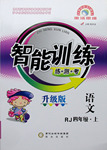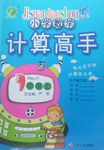题目内容
(10·山东D篇)
Batteries can power anything from small sensors to large systems. While scientists are finding ways to make them smaller but even more powerful, problems can arise when these batteries are much larger and heavier than the devices themselves. University of Missouri(MU) researchers are developing a nuclear energy source that is smaller, lighter and more efficient.
“To provide enough power, we need certain methods with high energy density(密度)”,said Jae Kwon, assistant professor of electrical and computer engineering at MU. “The radioisotope(放射性同位素) battery can provide power density that is much higher than chemical batteries.”
Kwon and his research team have been working on building a small nuclear battery, presently the size and thickness of a penny, intended to power various micro / nanoelectromechanreal systems (M/NEMS). Although nuclear batteries can cause concerns, Kwon said they are safe.
“People hear the word ‘nuclear’ and think of something very dangerous,” he said, “However, nuclear power sources have already been safely powering a variety of devices, such as pace-makers, space satellites and underwater systems.”
His new idea is not only in the battery’s size, but also in its semiconductor(半导体). Kwon’s battery uses a liquid semiconductor rather than a solid semiconductor.
“The key part of using a radioactive battery is that when you harvest the energy, part of the radiation energy can damage the lattice structure(晶体结构) of the solid semiconductor,” Kwon said, “By using a liquid semiconductor, we believe we can minimize that problem.”
Together with J. David Robertson, chemistry professor and associate director of the MU Research Reactor, Kwon is working to build and test the battery. In the future, they hope to increase the battery’s power, shrink its size and try with various other materials. Kwon said that battery could be thinner than the thickness of human hair.
71. Which of the following is true of Jae Kwon?
A. He teaches chemistry at MU.
B. He developed a chemical battery.
C. He is working on a nuclear energy source.
D. He made a breakthrough in computer engineering.
72. Jae Kwon gave examples in Paragraph 4_________.
A. to show chemical batteries are widely applied.
B. to introduce nuclear batteries can be safely used.
C. to describe a nuclear-powered system.
D. to introduce various energy sources.
73. Liquid semiconductor is used to _________.
A. get rid of the radioactive waste
B. test the power of nuclear batteries.
C. decrease the size of nuclear batteries
D. reduce the damage to lattice structure.
74. According to Jae Kwon, his nuclear battery _______.
A. uses a solid semiconductor
B. will soon replace the present ones.
C. could be extremely thin
D. has passed the final test.
75. The text is most probably a ________.
A. science news report B. book review
C. newspaper ad D. science fiction story
解析:细节理解题。根据第三段的叙述可知Kwon在研究一种原子能电池,所以C项正确。
答案:C
解析:细节理解题。根据文章第四段可知Kwon举例的目的是为了说明原子能电池是安全的,所以B项正确。
答案:B
解析:细节理解题。根据By using a liquid semiconductor, we believe we can minimize that problem可知D项正确。
答案:D
解析:细节理解题。根据Kwon said that battery could be thinner than the thickness of human hair可知C项正确。
答案:C
解析:推理判断题。本文讲述了Kwon的原子能电池的有关情况,文章体裁应属于科普文章,所以A项正确。
答案:A

 智能训练练测考系列答案
智能训练练测考系列答案 计算高手系列答案
计算高手系列答案